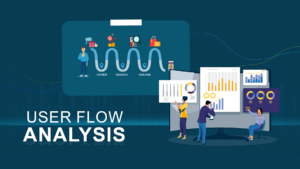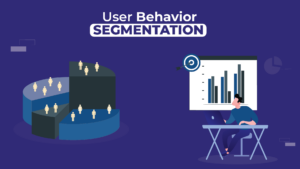
A Definitive Guide on User Activation Software in 2023
Welcome to the world of user activation software, where the secret sauce to unlocking the full potential of your product or service lies. In this
Have you ever wondered how businesses track user actions on their websites or apps? How do they measure the success of their marketing campaigns and understand if they are effectively reaching their goals? The answer lies in user conversion tracking.
Yes, conversion tracking in digital marketing is a vital component as it offers valuable insights into user engagement, conversion rates, and overall campaign performance. You might be wondering what exactly it includes and how you can implement it in your own business, right?
Relax. By the time you finish reading this article, you will gain a comprehensive understanding of the benefits and implementation strategies of user conversion tracking. You will discover how this powerful tool has the potential to revolutionize your digital marketing efforts.
Let’s get started.
Conversions are the actions your target audience takes that align with your marketing goals. It can extend beyond sales and include any action that shows involvement, like clicking on an advertisement or submitting a form.
Conversions provide insights into your marketing performance and help you optimize campaigns. It includes the entire customer journey, nurturing leads, and building brand awareness.
Conversion tracking is the process of monitoring and measuring consumer actions that move your business closer to its goals. It involves tracking the specific actions users take, like making purchases, subscribing to mailing lists, or filling out forms.
Conversion tracking assigns numbers to these actions so you can evaluate the effectiveness of your marketing campaigns and optimize strategies for success. It offers insights into user behavior, enabling data-driven decision-making and the optimization of marketing strategies.
To gain a comprehensive understanding of your marketing and advertising campaign’s conversion performance, it’s essential to track the following key performance indicators (KPIs):
This metric reveals the total number of conversions achieved. However, it doesn’t compare conversions to the campaign’s reach.
The conversion rate is the ratio of conversions to the number of people reached. Websites frequently use this KPI to estimate the percentage of purchases made by website visitors.
Note that multiple transactions made by the same consumer are not merged into one, which affects the accuracy of identifying influential customers.
This metric calculates the percentage of single-page website visits compared to the total number of visits. It indicates the ratio of visitors who explore only one page to those who navigate through multiple pages. Visitors who engage with multiple pages tend to be further along the sales funnel.
This KPI measures the time an average visitor spends on your website during a session. Another related metric is the average session duration, which divides the total session duration across all visits by the total number of visits. Longer durations often indicate better conversion potential.
This KPI reveals the number of web pages a visitor interacts with during a session. It provides insights into visitor engagement, especially if they explore multiple product pages, FAQs, and more. Identifying such engagement can enable targeted ad retargeting efforts.
Tracking conversions involves monitoring a range of actions, including social media link clicks, video plays, content downloads, newsletter subscriptions, and contact form submissions.
The frequency of these events indicates the potential for successful conversions. The more often these actions occur, the higher the likelihood of achieving the desired conversions.
This KPI determines the average expenditure per conversion, showcasing the cost of acquiring a new customer. It directly correlates with return on investment (ROI) and returns on advertising spend (ROAS).
Conversion tracking works when you create a conversion tracker in your Google Ads account and select the desired conversion action. It allows you to track various types of actions, such as website actions, phone calls, app installs, in-app actions, offline imports, and local actions.
The conversion tracking process varies slightly depending on the type of conversion, except for offline conversions. Here’s a general overview:
Through this process, you will need to add a conversion tracking code/tag snippet to your website or mobile app. When a user clicks on your ads, this tag places a temporary cookie on the user’s device. The conversion tracker recognizes the cookie and reports the conversion when the user achieves a predefined conversion goal.
For some types of conversions, you don’t need to place a tracking tag manually. For example, you can track app downloads and in-app purchases from the Google Play Store without manual tags.
Calculate your conversion rate by dividing total conversions by your chosen metric. This metric can be clicks, ad impressions, or site sessions. You will get a clear picture from it of how well your marketing efforts are performing and how effectively you’re reaching your goals.
Key performance indicators (KPIs) play an essential role in measuring your progress toward your goals. Suppose, your goal is to increase newsletter sign-ups on your website. One important KPI to monitor here is the number of visitors who successfully submit the newsletter sign-up form.
You can improve your conversion rate and optimize your marketing efforts by regularly monitoring and evaluating these KPIs.
You can track conversions in marketing by following these steps:
Choose goals that align with your market, target audience, mission, and other crucial factors for your business’s growth. For example, If you offer a SaaS-based solution, your goal might be to increase free trial sign-ups or paid subscriptions, while if you run a non-profit organization focused on donations, the goal could be to increase donation contributions.
Connect your conversion goals to specific marketing channels and content by creating a marketing, and sales funnel. Keep in mind that conversions often require multiple interactions with your brand.
Your funnel may involve steps like a social media post, a product page, an email sign-up page, an email newsletter, a product page, a purchase, and a thank-you page.
Set up conversion tracking using your preferred analytics tool. For instance, if you use Google Analytics, insert a small code snippet on each page where you want to track conversions.
Conversion tracking tools enable you to optimize the collection of data that aligns with your business objectives. For instance, if a user plays a video multiple times within a single session, it will be recorded as a single goal conversion by platforms like Google. Analyze this data to gain insights into your conversions.
Finally, make improvements to your marketing campaigns based on the analysis of conversion data. This can involve optimizing content, page designs, and other elements that influence conversions.
![]()
Tracking conversions provides several benefits for businesses engaged in digital marketing. Here are some key advantages:
Conversion tracking helps you identify the best-performing keywords, ads, ad groups, and campaigns that drive the desired conversions. This gives you the opportunity to put your efforts into what works.
Tracking conversions gives you a clear understanding of your return on investment. This knowledge helps you make informed decisions about allocating your advertising budget for optimal results in future campaigns.
Conversion tracking enables you to use different types of Smart Bidding strategies, which automatically optimize your campaigns based on your conversion goals. This helps you achieve better outcomes without frequent manual adjustments.
Tracking conversions provides visibility into the path customers take before they convert. This includes understanding how they behave across various devices and browsers, enabling you to adjust your marketing efforts to fit their demands.
In this regard, you can read more about the customer journey, and customer journey analytics from here.
Conversion tracking helps identify the quality of traffic sources. By knowing where installs, purchases, or other data points originate from, you can evaluate the performance of different sources and make data-driven decisions for future optimization.
In a nutshell, user conversion tracking is an indispensable tool for businesses seeking to optimize their digital marketing strategies and maximize their success. I strongly believe you now have a clear understanding of how it can revolutionize your marketing efforts.
Accurately measuring and analyzing user actions helps businesses gain valuable insights into the effectiveness of their campaigns, identify areas for improvement, and make data-driven decisions to enhance their overall performance.
So, whether you’re an e-commerce store, a service provider, or a content creator, incorporating user conversion tracking into your marketing toolkit can unlock a world of opportunities for growth and success.
Good luck on your journey!
Conversion tracking can provide numerous benefits to users, enhancing their overall experience and facilitating their decision-making process. Here’s how conversion tracking can help users:
Conversion tracking in Google Ads is a powerful tool that allows advertisers to measure and analyze the actions taken by users after interacting with their ads. It enables businesses to track specific conversions, such as purchases, form submissions, or app installations, and attribute them to the respective ad campaigns and keywords.

Welcome to the world of user activation software, where the secret sauce to unlocking the full potential of your product or service lies. In this
Have you ever wondered how businesses track user actions on their websites or apps? How do they measure the success of their marketing campaigns and

Have you ever wondered how users navigate through websites or apps? How do they seamlessly move from one screen to another, making decisions and accomplishing

Do you want to create a product that truly speaks to your customers? Are you looking for ways to gather valuable feedback and improve the

Ever wondered how often customers visit your online store before making a purchase? Or which promotional messages drive higher-value sales? User behavior segmentation holds the

In a world where data reigns supreme and competition is fierce, businesses are constantly searching for that extra edge that propels them ahead. Enter the